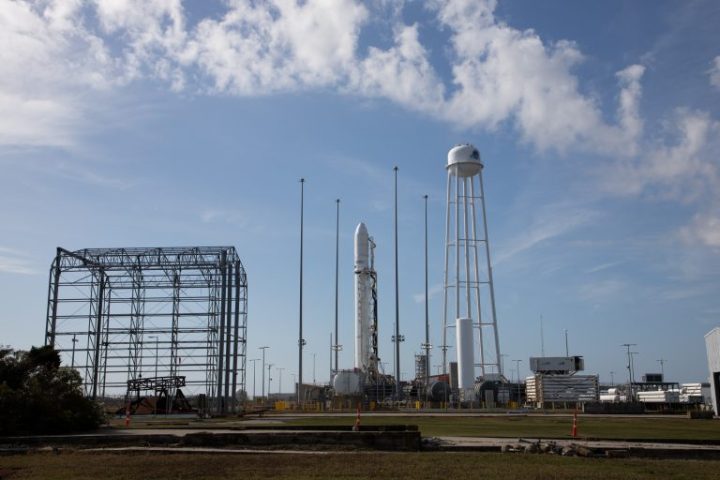Update: The launch of the Antares rocket has been delayed due to a fire alarm at the control center. The rocket will remain at the launch site and another launch attempt will be made on Monday, November 7 at 5:27 a.m. ET (2:27 a.m. PT). Coverage is available on NASA TV from 5 a.m. ET (2 a.m. PT) on Monday morning.
Early tomorrow morning, a Northrop Grumman Antares rocket will launch from NASA’s Wallops Flight Facility in Virginia, carrying supplies and equipment to the International Space Station (ISS). The launch of the uncrewed cargo mission will be livestreamed by NASA, and below, we’ve got the details on how to watch along at home.
The launch is scheduled for 5:50 a.m. ET (3:50 a.m. PT), so this will be one for the early birds! If you’re not up that early on a Sunday, you can tune in to see the spacecraft dock with the ISS on Tuesday, November 8, instead.
What to expect from the launch

This is the 18th resupply mission sent to the ISS by Northrop Grumman, which provides resupply services to NASA along with SpaceX. The Cygnus spacecraft will be filled with over 8,000 pounds of supplies for the crew and scientific experiments to be conducted in the microgravity environment of the space station. Carried by an Antares rocket, the Cygnus for this mission has been named Sally Ride in honor of the American spaceflight pioneer.
The weather is looking promising for the launch, with NASA sharing that there is 80% favorable conditions in the area. There is “a slight chance of low-level clouds that may potentially violate cloud ceiling requirements,” NASA writes, but the generally warm and calm conditions are good news for the planned launch.
How to watch the launch
The launch of the cargo mission will be livestreamed on NASA TV. You can tune into coverage beginning at 5:30 a.m. ET (2:30 a.m. PT) on Sunday, November 6, either by using the video embedded near the top of this page or by heading directly to NASA’s Live channel on YouTube. The launch itself is scheduled for 5:50 a.m. ET (2:50 a.m. PT).
The cargo craft will travel to the space station throughout Sunday and Monday and is scheduled to arrive early on the morning of Tuesday, November 8. Coverage of its arrival and capture will begin on NASA TV at 4:30 a.m. ET (1:30 a.m. PT) on Tuesday, with coverage of the installation of the craft to the ISS beginning at 7:30 a.m. ET (4:30 a.m. PT).
Editors' Recommendations
- Junk from the ISS fell on a house in the U.S., NASA confirms
- How to watch the final launch of ULA’s mighty Delta IV Heavy rocket
- Here’s the new science that’s launching to the ISS today
- Watch SpaceX’s cinematic video previewing Starship megarocket test
- How to watch SpaceX launch the third flight of its Starship rocket on Thursday




